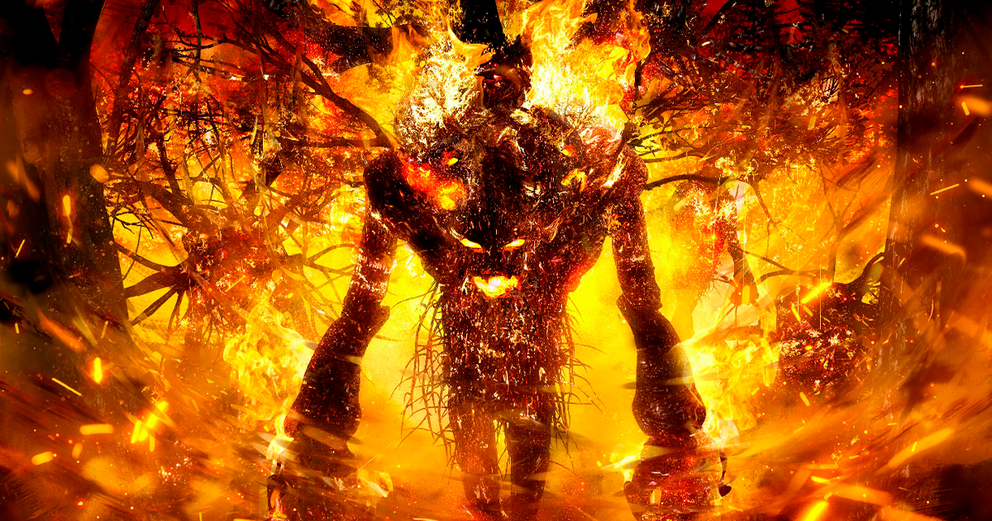Surtr: Norse mythology's giant god of fire and apocalypse
Top image A representation of Jötunn ( Giant) Surtr of Norse mythology
Giants, demigods, dwarves and elves - all these creatures made the Old Norse mythology so colorful and captivating. Preserved for posterity in the Norse sagas and manuscripts, these myths and legends are filled with creatures that play crucial roles in the Norse culture and identity. One of these is the Surtr, an enigmatic and powerful Jötunn - a giant who is foretold to play a critical role in the fated end of the world.
Surtr Rising During the World’s Final Battle
Of all the Old Norse mythical beings, Surtr is one of the oldest. His name is amongst those that are first to be documented, most famously in the Icelandic sagas, and the famed Prose Edda. Translated, Surtr’s name means literally “the black one” or “the swarthy one” and could be linked to his connection to fire. Surtr is foretold to be a critical figure in Ragnarök, the final battle in which the world gets destroyed. Carrying his great flaming sword, Surtr would go into battle against the Æsir, the Norse Gods , and personally fight the god Freyr. Following this, the flames he carries would engulf the whole world. In some sources, he is also connected with Muspelheim, a great realm of fire in Norse cosmology.
 A scene from Ragnarök, the final battle between Odin and Fenrir and Freyr and Surtr (right in the image).
A scene from Ragnarök, the final battle between Odin and Fenrir and Freyr and Surtr (right in the image).
Ragnarök, in Old Norse mythology, is the fated end of the world. Preceding it is Fimbulvetr, a series of three consecutive and very harsh winters, followed by innumerable wars. As all life on Earth perishes, the gods are fated to do one last battle against the Jötnar - the Giants - and many other monstrous beings. In the battle, all will perish, and the world will be drowned in a great flood, thus ending. Later on, the whole of the world starts anew, in a powerful cycle of death and rebirth.
And in these events, Surtr holds a special place. During the battles of Ragnarök, the god Freyr slays a powerful giant named Beli (“Roarer”). In order to avenge him, Surtr marches to battle against “Beli’s bane”, i.e., Freyr. In all the accounts that mention him, Surtr is described as a very powerful being, capable of great destruction thanks to his great flaming sword. In the Prose Edda chapter Gylfaginning, it is said that: "at the end of the world he [Surtr] will go and wage war and defeat all the gods and burn the whole world with fire".
A God from the South Who Will Burn the Earth
There is no doubt that the origins of Surtr far predate the Old Norse civilization and their myths. Surtr is much older, rooted in the beliefs and observations of the paleo-Norse and the Proto-Europeans. The clues for this lie in descriptions of Surtr: he is always “from the south”, and always connected with fire, heat, and flame. It is likely that the origins of Surtr lie in the people’s fear of drought and the terrifying heat of the summer - which was always the sure end of life for prehistoric man. There is a great possibility that the Giant Surtr is just a personification of drought and the catastrophic sun’s heat that can bring about climate change and “great floods” that are foretold to come.
 Surtr’s wrath of fire by the artist Emil Doepler interpreted it in an illustration in the book Walhall, die Götterwelt der Germanen. Martin Oldenburg. Published in Berlin, 1905.
Surtr’s wrath of fire by the artist Emil Doepler interpreted it in an illustration in the book Walhall, die Götterwelt der Germanen. Martin Oldenburg. Published in Berlin, 1905.
In Iceland, for example, there are many toponyms that bear Surtr’s name, and they all originate in the pre-Christian period of this nation. And, unsurprisingly, most of the toponyms are connected to volcanoes and caves. There is also significant evidence that Surtr was in some way a worshiped being, with the locals crossing great distances to visit a special cave where Surtr is believed to have dwelt. There they gave offerings in the form of fowl, game, sheep, and goats. Likely this was done by Iceland’s first Viking settlers in order to stave off volcanic activity, which they believed was the doing of Surtr the great flaming giant.
The Herald of the World’s End
In various Norse eddas and sagas , Surtr is almost always mentioned in the same context - as the powerful giant that dominates the Ragnarök battle and later burns the world. His ultimate fate, however, is unknown. Like all the other creatures and gods, he too likely perishes in the world’s end, but how, we do not know.
 A depiction of Líf and Lífþrasir (1895) by Lorenz Frølich. Líf and Lífþrasir, the only surviving woman and man (respectively) of Ragnarök, stand side by side.
A depiction of Líf and Lífþrasir (1895) by Lorenz Frølich. Líf and Lífþrasir, the only surviving woman and man (respectively) of Ragnarök, stand side by side.
We do know, however, that not all the people on the Earth were defeated by Surtr’s terrifying fire. In Norse mythology, two people hid in the woodland of Hoddmímis Holt. They were Líf and Lífthrasir, and they found refuge there, all throughout the Fimbulvetr, and against the fire of Surtr. They were nourished by dew, and “from them generations sprang” and repopulated the barren earth. So, Surtr - after all - was not the destroyer of all.

